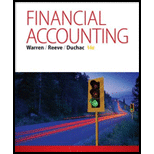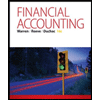
1.
Prepare
1.
Explanation of Solution
Prepare journal entry for cash proceeds from the issuance of the bonds on July 1, 2016.
| Date | Account Title and Explanation | Post Ref | Debit ($) | Credit ($) | |||
| 2016 | Cash | 73,100,469 | |||||
| July | 1 | Premium on Bonds Payable (1) | 8,100,469 | ||||
| Bonds Payable | 65,000,000 | ||||||
| (To record issue of bonds at premium) | |||||||
Table (1)
- Cash is an asset and it is increased. So, debit it by $73,100,469.
- Premium on Bonds Payable is an adjunct liability account and it is increased. So, credit it by $8,100,469.
- Bonds payable is a liability and it is increased. So, credit it by $65,000,000.
Working note (1):
Calculate premium on bonds payable.
2 (a)
Prepare journal entry to record first semiannual interest payment and amortization of bond premium on December 31, 2016.
2 (a)
Explanation of Solution
Prepare journal entry for first semiannual interest payment and amortization of discount on bonds.
| Date | Account Title and Explanation | Post Ref | Debit ($) | Credit ($) | |||
| 2016 | Interest Expense (4) | 3,494,977 | |||||
| December | 31 | Premium on Bonds Payable (2) | 405,023 | ||||
| Cash (3) | 3,900,000 | ||||||
| (To record first semiannual payment of interest on bonds) | |||||||
Table (2)
- Interest expense is an expense and it decreases the equity value. So, debit it by $3,494,977.
- Premium on Bonds Payable is an adjunct liability account and it is decreased. So, debit it by $405,023.
- Cash is an asset and it is decreased. So, credit it by $3,900,000.
Working notes:
(2)
Calculate premium on bonds payable semiannually.
(3)
Calculate the amount of cash interest.
(4)
Calculate the interest expense on the bond.
2 (b)
Prepare journal entry to record second interest payment and amortization of bond discount on June 30, 2017.
2 (b)
Explanation of Solution
Prepare journal entry for second interest payment and amortization of discount on bonds.
| Date | Account Title and Explanation | Post Ref | Debit ($) | Credit ($) | |||
| 2017 | Interest Expense (7) | 3,494,977 | |||||
| June | 30 | Premium on Bonds Payable (5) | 405,023 | ||||
| Cash (6) | 3,900,000 | ||||||
| (To record second semiannual payment of interest on bonds) | |||||||
Table (3)
- Interest expense is an expense and it decreases the equity value. So, debit it by $3,494,977.
- Premium on Bonds Payable is an adjunct liability account and it is decreased. So, debit it by $405,023.
- Cash is an asset and it is decreased. So, credit it by $3,900,000.
Working notes:
(5)
Calculate premium on bonds payable semiannually.
(6)
Calculate the amount of cash interest.
(7)
Calculate the interest expense on the bond.
3.
Determine the amount of total interest expense for 2016.
3.
Explanation of Solution
Determine the amount of total interest expense for 2016.
Hence, the amount of total interest expense for 2016 is $3,494,977.
4.
Explain the situation when contract rate of bond is greater than the market rate of interest.
4.
Explanation of Solution
Yes, the bond proceeds will always be greater than the face amount of bonds when the contract interest rate is greater than the market interest rate.
If the stated interest rate of a bond is greater than the market interest rate, then the bonds is issued at premium. This is because the bonds are more valuable in market and investors are ready to pay more than the maturity
5.
Calculate the amount of cash proceeds (present value) from the sale of the bonds using present value tables.
5.
Explanation of Solution
Determine the amount of cash proceeds (present value) from the sale of the bonds.
Step 1: Calculate the semiannual interest on bonds.
Step 2: Calculate the present value of interest.
| Particulars | Amount |
| Interest payment (a) | $3,900,000 |
| PV factor at semiannual market interest rate of 5% for 20 periods (b) | 12.46221 |
|
Present value [(a) × (b)] | $48,602,619 |
Table (4)
Note: Refer Appendix A in the text book for present value factor.
Step 3: Calculate the present value of lump sum payment of $65,000,000 (principal amount) at 5% for 20 periods.
| Particulars | Amount |
| Single payment (a) | $65,000,000 |
| PV factor at semiannual market interest rate of 5% for 20 periods (b) | 0.37689 |
|
Present value [(a) × (b)] | $24,497,850 |
Table (5)
Note: Refer Appendix A in the text book for present value factor.
Step 4: Calculate the amount of cash proceeds from the sale of the bonds.
Thus, the amount of cash proceeds from the sale of the bonds is $73,100,469.
Want to see more full solutions like this?
Chapter 14 Solutions
Financial Accounting
- Please provide the solution to this general accounting question with accurate financial calculations.arrow_forwardThe Urban-Tec has sales of $825,000, costs of goods sold of $592,500, inventory of $148,200, and accounts receivable of $69,800. How many days, on average, does it take the firm to sell its inventory assuming that all sales are on credit? A) 74.19 days B) 84.69 days C) 78.07 days D) 91.25 days E) 76.61 daysarrow_forwardSolve this general accounting problemarrow_forward
- I am looking for the correct answer to this general accounting problem using valid accounting standards.arrow_forwardPlease given correct answer for General accounting question I need step by step explanationarrow_forwardNexus Builders Inc. reported a Cost of Goods Sold (COGS) for the current year of $560,000. During the same period, the Inventory account increased by $25,000, and the Accounts Payable account decreased by $15,000. The amount of cash paid to suppliers for inventory is: A. $520,000 B. $585,000 C. $600,000 D. $535,000arrow_forward
 Financial AccountingAccountingISBN:9781305088436Author:Carl Warren, Jim Reeve, Jonathan DuchacPublisher:Cengage LearningPrinciples of Accounting Volume 1AccountingISBN:9781947172685Author:OpenStaxPublisher:OpenStax College
Financial AccountingAccountingISBN:9781305088436Author:Carl Warren, Jim Reeve, Jonathan DuchacPublisher:Cengage LearningPrinciples of Accounting Volume 1AccountingISBN:9781947172685Author:OpenStaxPublisher:OpenStax College

